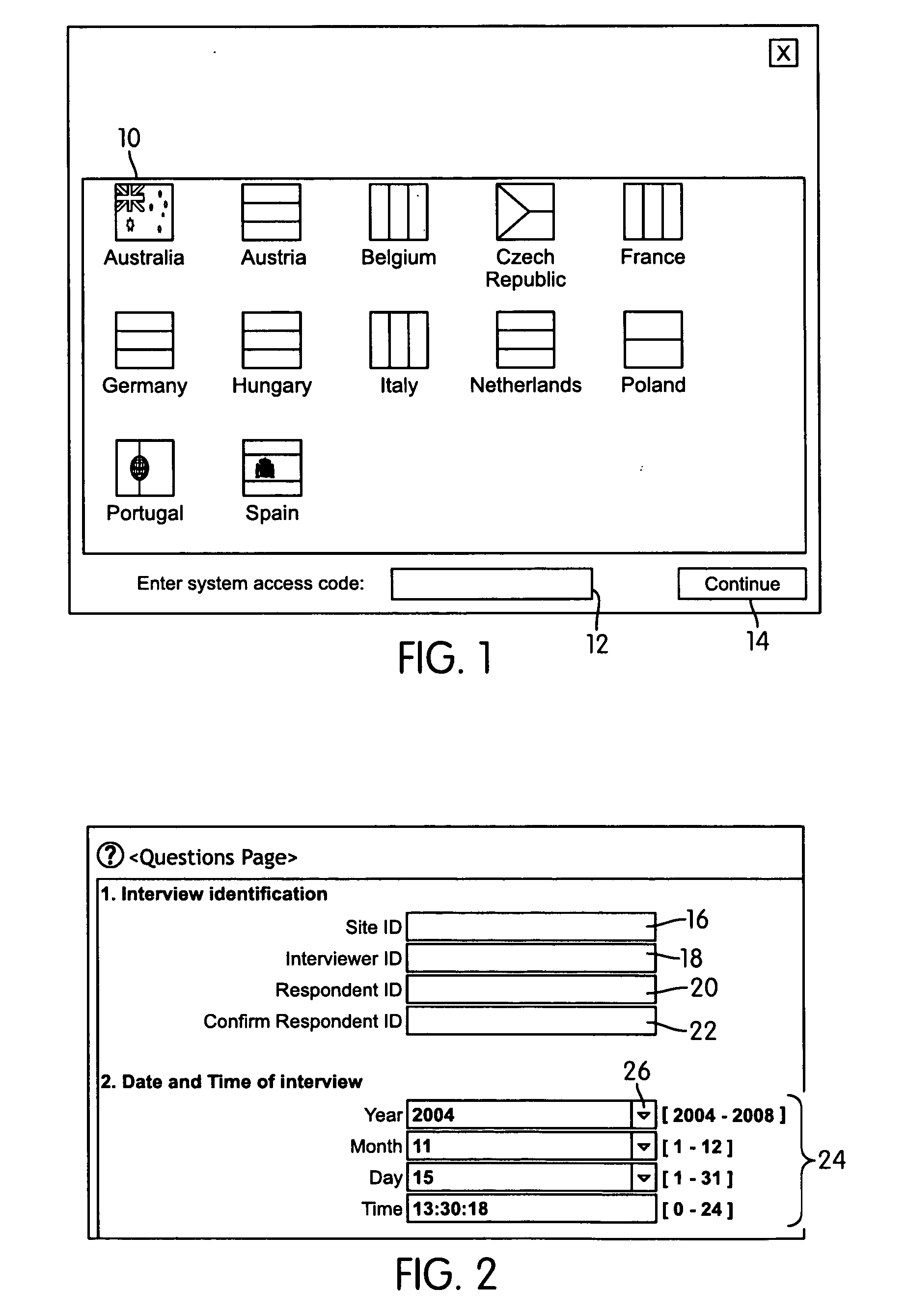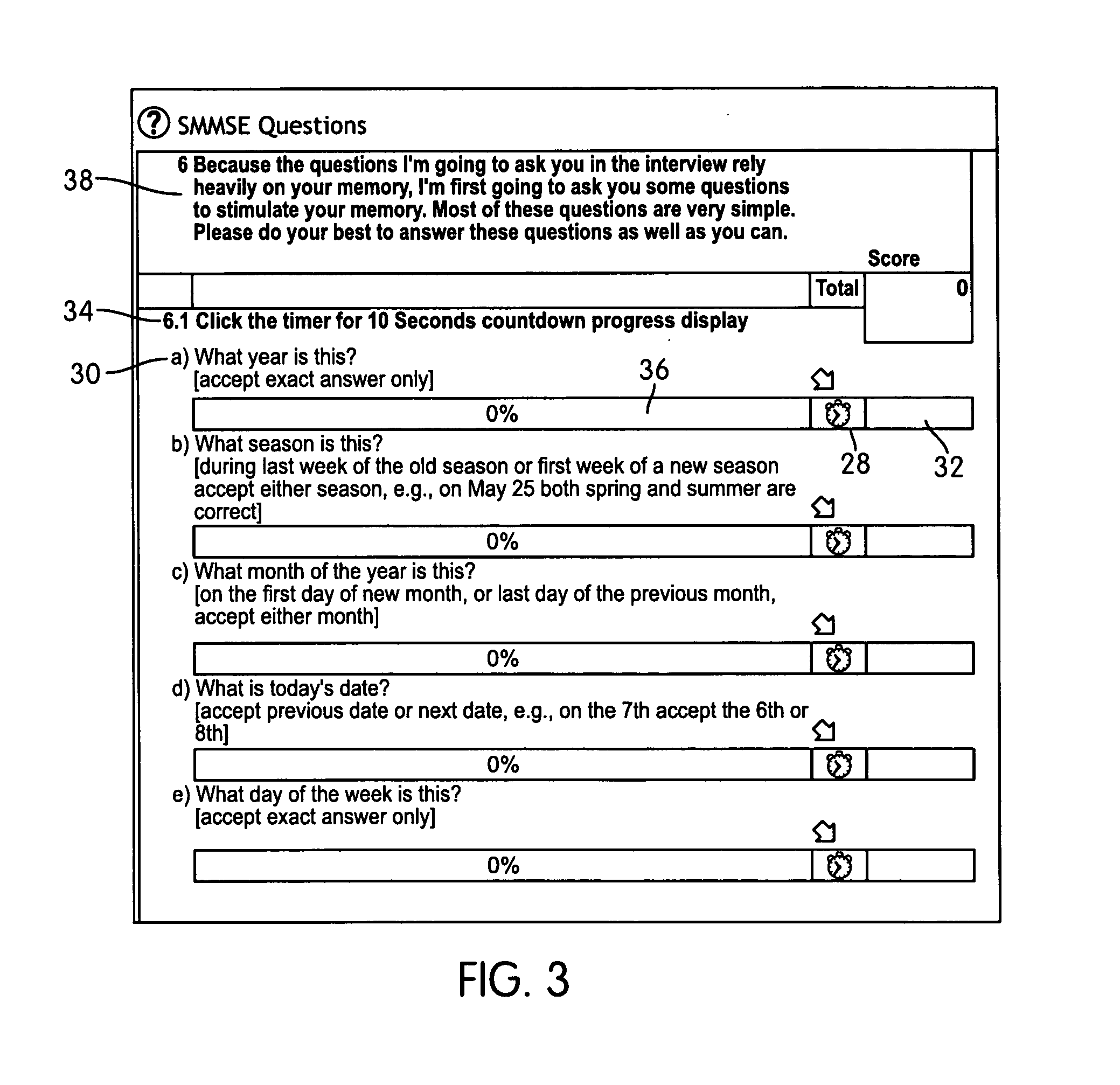System and methodology for collecting autobiographical data concerning use of consumer products or exposures to substances
a technology of autobiographical data and consumer products, applied in the field of retrospective collection and autobiographical data, can solve the problems of compromising data quality, inaccurate and reliable collection of such information, and imperfect memory of respondents
- Summary
- Abstract
- Description
- Claims
- Application Information
AI Technical Summary
Benefits of technology
Problems solved by technology
Method used
Image
Examples
Embodiment Construction
[0058] The invention is described herein with reference to the accompanying drawings. The embodiment of the invention described herein and shown in the drawings is illustrative and should not be considered limiting on the scope of the invention.
[0059] A preferred system for conducting a computer aided EHC questionnaire in accordance with the present invention, will be referred to as the computer-aided instrument, or “CAI,” and is represented schematically in FIG. 37. The system, or CAI, 100 generally includes a data storage system 102, a processor system 104, an interviewer display system 106, an interviewer input system 108, and a respondent (or subject) display system 110.
[0060] Data relating to questions, interviewer input screens, formats for graphical user interfaces (GUIs), and all other aspects associated with the implementation of the computer-aided EHC are stored in data storage system 102. Client responses and saved interviewer inputs are also stored in data storage syst...
PUM
 Login to View More
Login to View More Abstract
Description
Claims
Application Information
 Login to View More
Login to View More - R&D
- Intellectual Property
- Life Sciences
- Materials
- Tech Scout
- Unparalleled Data Quality
- Higher Quality Content
- 60% Fewer Hallucinations
Browse by: Latest US Patents, China's latest patents, Technical Efficacy Thesaurus, Application Domain, Technology Topic, Popular Technical Reports.
© 2025 PatSnap. All rights reserved.Legal|Privacy policy|Modern Slavery Act Transparency Statement|Sitemap|About US| Contact US: help@patsnap.com



